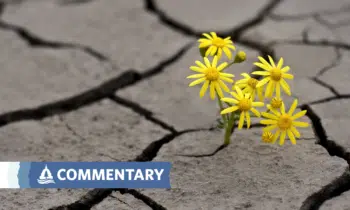 The Trump Administration’s assaults against efforts to preserve a livable climate are breathtaking in their ambition, including:
The Trump Administration’s assaults against efforts to preserve a livable climate are breathtaking in their ambition, including:
- Withdrawing from the Paris Agreement,
- firing climate-critical federal employees en masse,
- freezing billions in climate and clean energy spending,
- halting federal approvals for wind energy,
- removing climate information from federal websites,
- halting climate research and undermining climate education, and
- opening federal lands to more aggressive logging and fossil fuel energy production.
A wide range of citizens who understand the science of climate change, including most public employees, are aware of the destructive nature of these actions. Initial feelings of rage and hopelessness are understandable. But what should the playbook be for public employees and their supporters to address this urgent threat and maintain hope?
Federal employees are, of course, in a uniquely difficult situation to fight back. Key employees have been fired or threatened with firing, given incentives to resign, and ordered to support the administration’s pro-fossil-fuels priorities. They may, in many cases, be left with a difficult choice between leaving their jobs and acquiescing to the administration’s destructive approach to their agencies’ work. If they choose to stay, resistance to adverse actions on climate within their agencies is likely to be severely punished. Many federal employees may also be concerned about the impacts of participating in protests, even in their personal capacity and within their First Amendment rights. Others may take the risk of retaliation and continue to participate in demonstrations and public speaking on personal time.
Many state employees, in contrast, continue to have an opportunity to be helpful. Twenty-four state governors are part of a U.S. Climate Alliance. Therefore, public employees within many state, local, and tribal agencies may have support for climate-preserving activities. Efforts by these jurisdictions will be important. New York and Vermont have passed polluter-pays laws, requiring oil companies to assist with paying for past climate disasters. California continues to pursue clean energy investments as well as energy efficiency standards for appliances and buildings, helping to make its citizens among the lowest consumers of energy per capita.
So, what else can public employees and ordinary citizens do to help maintain climate hope during this critical time?
- Becoming anonymous whistleblowers: Even federal employees who stay at their agencies during the Trump administration may have the opportunity to be anonymous whistleblowers to PEER and other whistleblower groups on climate issues. These employees can bring greater awareness to the destructive activities of the current administration while limiting their exposure to retaliation.
- Funding legal challenges to Trump’s illegal firings and climate-harming actions: To the extent that Trump administration actions on climate are illegal, legal challenges can be an important deterrent and have found some support in the courts. EPA Administrator Lee Zeldin has announced he has directed the agency to reconsider its “endangerment finding” that greenhouse gases threaten public health and the environment, even though a reversal would be contrary to the known facts. Legal challenges to the illegal firings of public employees and the proposed reversal of the endangerment finding could be critical to ensuring the federal government’s ability to take future climate actions under existing authorities.
- Joining groups fighting to reduce emissions: Many environmental groups are fighting to advance climate education, research and action. Current and former public employees can help educate and support these groups.
- Educating ourselves and others on real and false solutions: Key to making progress in this time of turmoil and threat is education on what government could and should be doing to help us transition away from fossil fuels and why it is critical to do this promptly. Real solutions include imposing a rising fee on fossil fuels where they enter our economy, and using the proceeds to provide equal per person rebates that can help keep energy affordable for all during a transition away from fossil fuels. The United Nations Intergovernmental Panel on Climate Change has confirmed that this is a key element of achieving an expeditious shift to clean energy. Rejection of false solutions will require voters to understand the unfixable flaws of carbon offsets, the counterproductive nature of woody biomass energy, and why carbon capture and storage remains infeasible, expensive, and dangerous.
- Becoming climate voters: The public needs to understand that while legal challenges are critical, our next major opportunity to regain our footing in the fight against climate change will be the mid-term elections. Everyone who can help fund or actually participate in canvassing to increase voter awareness of real and false solutions, encourage voter registration and determine which candidates will support effective climate action will have a critical role to play.
Only if we work together, each bringing our unique skills and connections, will we be able to maintain hope for a livable climate future.
 Laurie Williams recently retired after 35 years as an attorney at the U.S. Environmental Protection Agency. Williams is a consultant on climate policy for PEER.
Laurie Williams recently retired after 35 years as an attorney at the U.S. Environmental Protection Agency. Williams is a consultant on climate policy for PEER.